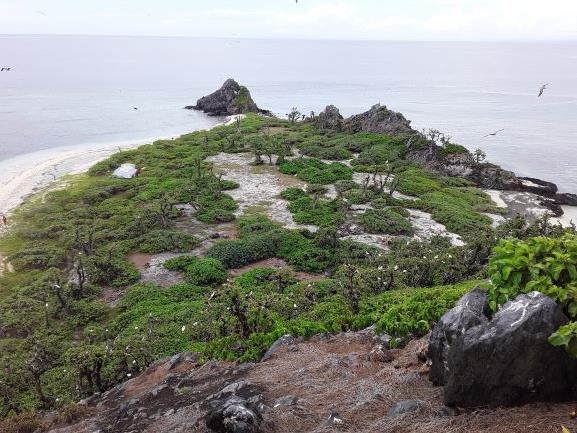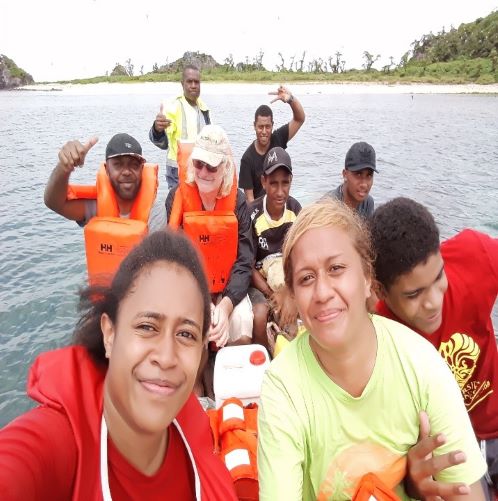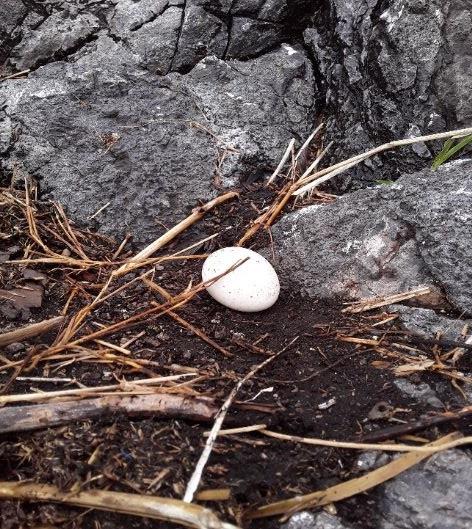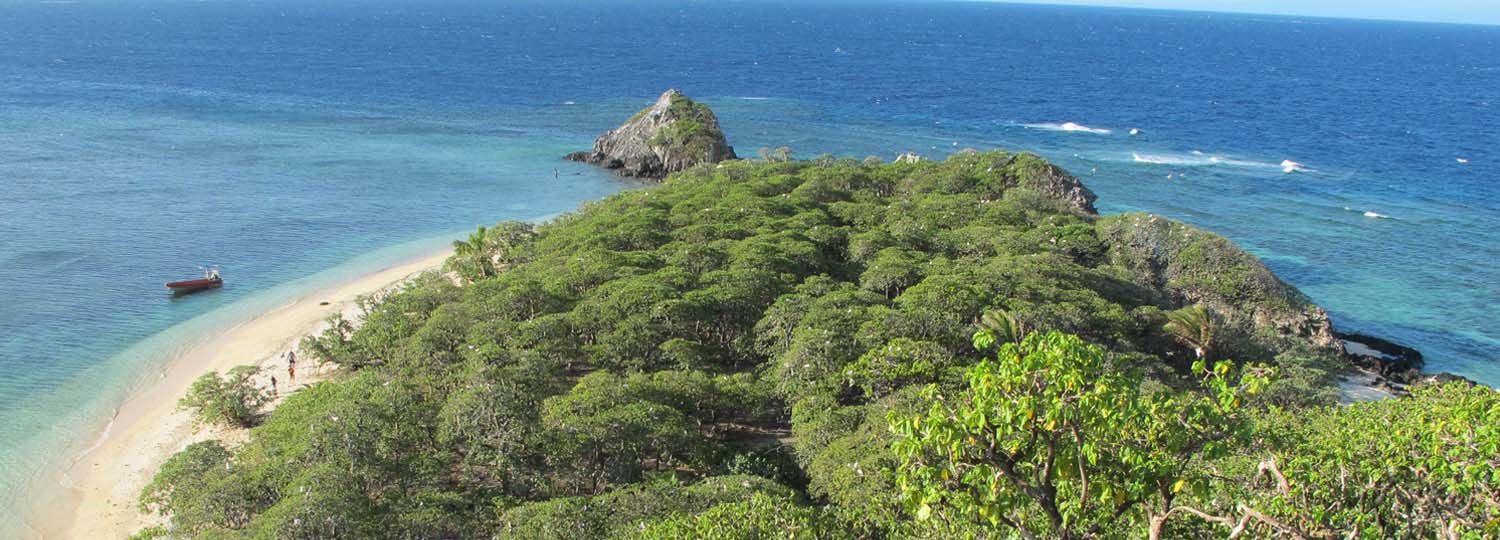The content of the blog has been adapted from the contributions of the staff of BirdLife International : Meli Naiqama, Semaema Vakaciriwaqa and Francis Saladrau.
Many writers have described Vatu-i-Ra as a rather lonely, uninhabited, rocky little island, lying in the middle of nowhere within the Vatu-i-Ra passage, between Viti Levu and Vanua Levu. But the island belonging to the Nagilogilo Clan of Nasau Village, Navitilevu, Ra has been identified as an important bird and biodiversity area for several seabird species by BirdLife International. The Vatu-i-Ra Island is home to nine different types of seabirds with the biggest group being the black noddy (Anous tenuirostris).

A view of Vatu-i-Ra Island after Tropical Cyclone Winston ©BirdLife International
On a rainy Monday of November 2019, a team from BirdLife International and Nature Fiji-Mareqeti Viti took off to Vatu-i-Ra Island with a local guide, Ini, and four others to conduct a survey of the current bird population on the island. One of the first things that our team noticed was that the island’s vegetation was still recovering from the devastating 2016 Tropical Cyclone Winston.
The survey findings suggest that there are high numbers of breeding brown noddies and bridled terns – both ground-nesting birds – with lots of eggs and some chicks evident. Surprisingly, the presence of myna birds were also found on the Vatu-i-Ra Island. There were four jungle mynas and four common mynas on the island. Migratory birds such as the wandering tattlers and ruddy turnstone that are associated with mudflats, also visit Vatu-i-Ra Island.

The team from BirdLife International on their way to visit the Vatu-i-Ra Island to conduct a survey. ©BirdLife International.
The BirdLife International Pacific Regional Programme Coordinator, Mark O’Brien, who was also part of the survey team and has made several visits to the Vatu-i-Ra Island before the Tropical Cyclone Winston, said the difference on the island was incredible and depressing.
“The loss of forest throughout the main area has had a catastrophic effect on the black noddies and it is clearly going to be sometime before the habitat is restored sufficiently for the birds to return to breed in the high numbers of previous years,” Mr O’Brien said.

An egg of a seabird on Vatu-i-Ra Island. © BirdLife International
However, he said the increase in numbers of ground-nesting seabirds was pleasing and this could have been due to the combination of the removal of ground predators 10 years ago and the increase in the extent of open ground caused by the cyclone.
“It is fascinating to observe how the wildlife on the site responds to environmental pressures.”
The Vatu-i-Ra Island is important for bird life as they have been breeding all over the island for many years now and it is their home. To ensure that they continue to breed and exist in the future, people should refrain from visiting the island to avoid any disturbance to the birds.
To protect the land and marine life on the island and its surrounding waters, the 110.5 square kilometers Vatu-i-Ra Conservation Park was established in 2017 through a unique partnership with locally-based tourism operators, dive liveaboard operators, the communities from Nakorotubu District, the Ra Provincial Office, Wildlife Conservation Society, the Fiji Environmental Law Association, and BirdLife International.

A view of Vatu-i-Ra island before the devastating Tropical Cyclone Winston. © Stacy Jupiter
Together, these partners developed a management plan to protect the park’s rich biodiversity. One of the successful activities is the establishment of a voluntary contribution to the park conservation fund that supports the protection of the park and sponsors deserving students from the area for further studies.